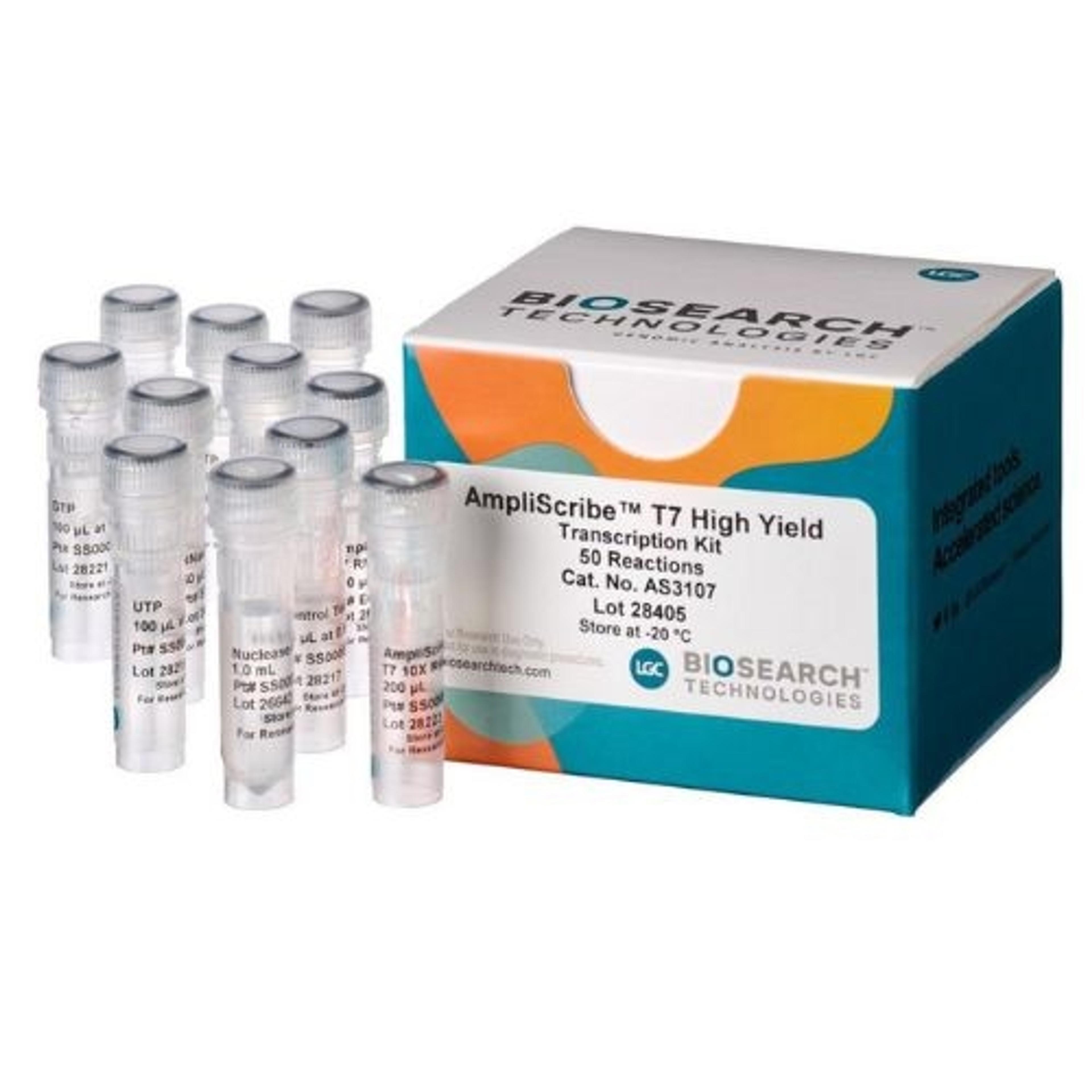Overcome common hurdles in scaling up mRNA-based therapeutics
Explore ways to resolve three of the key challenges in the field of mRNA-based therapies
3 Apr 2024

SelectScience® speaks with Xinyue (Frank) Zhang, Manager of messenger RNA (mRNA) Process Development at GeneLeap Biotechnology, for an insider’s look into the exciting world of RNA-based therapeutics.
The last few years have seen a huge investment into the science dedicated to harnessing the power of RNA, and particularly in advancing mRNA-based therapeutics. GeneLeap Biotech, a subsidiary of Luye Life Sciences founded in 2020, is working to revolutionize the infectious disease, genetic disorder, and oncology treatment landscape. “At GeneLeap, we focus on utilizing mRNA for vaccine development, drug discovery, and lipid nanoparticle delivery technology platforms. Our vision is to redefine the possibilities in healthcare by looking beyond traditional therapies,” explains Zhang. “We develop synthetic, modified mRNA drugs with the capability to encode a wide range of natural and engineered proteins designed to be absorbed by specific cells in designated tissues or organs. This mechanism focuses on diseases where targeted cell activation can significantly aid the body in combating or preventing various health conditions.”
Going beyond traditional therapies
Traditional prophylactic vaccines only protect against new infections and do not induce immunity in patients with established infections. However, the use of mRNA technology in a therapeutic vaccine aims to elicit an antigen-specific adaptive immune response, while also contributing to long-term immune memory. For example, GeneLeap’s human papillomavirus (HPV) therapeutic mRNA vaccine achieves this by translating engineered mRNA into modified versions of HPV16 E6 and E7 proteins that activate the CD8 T-cells in the immune system. "Our in vivo studies already demonstrate the vaccine's potential therapeutic effect, inhibiting tumor growth and extending the lifespan of mice with HPV16 lesions," explains Zhang. "While we await more data from ongoing clinical trials, the vaccine represents a promising therapeutic approach for treating HPV16-related dysplasia and cancers.”
Navigating the complexities of scale up
Despite the promising potential that mRNA therapies offer, the path to scaling up and creating market-ready therapeutics is full of challenges. Drawing on his experience at GeneLeap, Zhang speaks to three main challenges that his team encountered when optimizing process development and manufacturing:
1. Poly(A) tail integrity
“In our initial small-scale in vitro transcription (IVT) processes, we achieved high poly(A) tail integrity in our mRNA,” states Zhang. “However, when we transitioned to larger batches using bulk plasmids, we encountered a significant drop in poly(A) integrity. After meticulous investigation, we realized that while small-scale plasmids need only two to three generations from the E. coli for template expansion, scaling up required anywhere from six to ten different generations of E. coli, which was resulting in the loss of poly(A).” Recognizing this, the team set about optimizing the E. coli culture conditions and the sequence of the DNA template. This finally led them to successfully restoring the desired integrity level in their large-scale mRNA production.
2. Yield and capping efficiency
The second hurdle that the team faced was that of yield and capping efficiency, which appeared to coincide with precipitation issues. Initially perceived as separate problems, the team soon realized these were interconnected issues. “In our scaled-down models, we consistently achieved high yield and did not face issues around precipitation. However when attempting to scale up, we faced a dual issue,” shares Zhang. “To address this, drawing on our knowledge of IVT, we developed new methods employing process analytical technologies - such as high-performance liquid chromatography (HPLC) - to monitor IVT reactions. At the same time, we adopted a systematic design of experiments (DOE) methodology to help identify the variables that could be the root cause of the issues. This led us to implement a series of process optimizations and new quality control measures, including a switch in raw materials, ensuring that each mRNA batch met our stringent standards for yield and cap efficiency.”
3. Double-stranded RNA
The third challenge presented a double-edged sword, Zhang reveals. “Our team was fortunate in a way to have had a small amount of contaminating double-stranded RNA (dsRNA) in our process right from the beginning,” he explains. “This prompted us to explore various detection methods to quantify the dsRNA – including dot-blots, enzyme-linked immunosorbent assay (ELISA), and thread-based methods – only to be met with inconsistent results. This led our team on a quest to understand mechanisms behind dsRNA detection, resulting in us developing an in-house integrated orthogonal method for quantifying dsRNA. This allowed us to refine the synthesis process and gain a more accurate assessment of mRNA quality.”
Looking back, Zhang emphasizes that a key learning for his team was the importance of using high-quality raw materials. While hurdles during scale up can easily be chalked up to logistical issues, they can be equally rooted in scientific intricacies. “Utilizing raw materials of varying qualities gives different results in mRNA quality,” Zhang points out. “It is advisable to screen different sources of raw materials early on to understand how they can impact the end-product. This is critical to achieving a cost-effective and efficient process, while upholding high quality.” Approaching scale-up challenges with a quality-by-design mindset – that is, by systematically and proactively integrating quality considerations throughout the entire process – was also crucial, he asserts. Hence, consistently employing a DOE approach, leveraging a deep understanding of the mRNA synthesis process, and applying prudent risk management were pivotal in successfully overcoming production challenges for the GeneLeap team.
Utilizing raw materials of varying qualities gives different results in mRNA quality. It is advisable to screen different sources of raw materials early on to understand how they can impact the end-product.
Xinyue (Frank) Zhang Manager of mRNA Process Development at GeneLeap Biotechnology
A future fueled by new RNA modalities
For the immediate future, Zhang expresses excitement in circular RNA (circRNA) technology, an avenue that his team is in the early stages of exploring. The anticipated advantages of circRNA – better stability and resistance to degradation, improved pharmacokinetics, and diverse functions compared to linear mRNA – hint at the potential to better regulate gene expression, offering new directions in tackling disease treatment and diagnosis. Zhang acknowledges the challenges in circRNA manufacturing, including circularization during IVT and the need for multiple purification techniques to avoid immunogenicity. He remains optimistic that the world will see a surge of circRNA-based innovation across diagnostics and therapeutics as these issues get closer to resolution, even shifting the way scientists approach complex diseases.
Envisioning the long-term future of this field, Zhang anticipates the inevitable expansion of RNA technologies, including mRNA and RNA interference, into other applications where conventional treatments are limited, such as treating genetic disorders, cancers, autoimmune diseases, and rare diseases. The ability of RNA technology to precisely target specific genes opens doors for personalized medicine, tailoring therapeutics to an individual's genetic makeup to improve efficacy and reduce side effects. Moreover, Zhang foresees RNA technology being used for preventative therapeutics for individuals with a high genetic risk for certain diseases. Much like the role of mRNA vaccines in helping combat the pandemic, the preventive and rapid-response capabilities of mRNA-based therapeutics could be channeled into future public health strategies.1-3
The future holds immense promise for gene therapy, fueled by RNA technologies, concludes Zhang: “RNA therapies have the potential to revolutionize the treatment of a broad spectrum of diseases, pushing the boundaries of what is currently achievable in medicine. However, this will also require careful navigation of ethical, regulatory, and technical challenges to unlock the full potential of RNA-based therapies.”
Related content
Editorial article: Continuous mRNA manufacturing to boost therapy and vaccine output
Accelerating Science Feature: How to cure the incurable with cell and gene therapy
References
Norbert Pardi, Michael J. Hogan, Frederick W. Porter et. al., mRNA Vaccines - a New Era in Vaccinology, Nature Review Drug Discovery, 2018, 17: 261-279.
Fernando P. Polack, Stephen J. Thomas, Nicholas Kitchin et. al., Safety and Efficacy of the BNT162b2 mRNA Covid-19 Vaccine. The New England Journal of Medicine, 2020, 383: 2603-2615.
Eduarde Rohner, Ran Yang, Kylie S. Foo et. al., Unlocking the Promise of mRNA Therapeutics, Nature Biotechnology, 2022, 40: 1586-1600.


